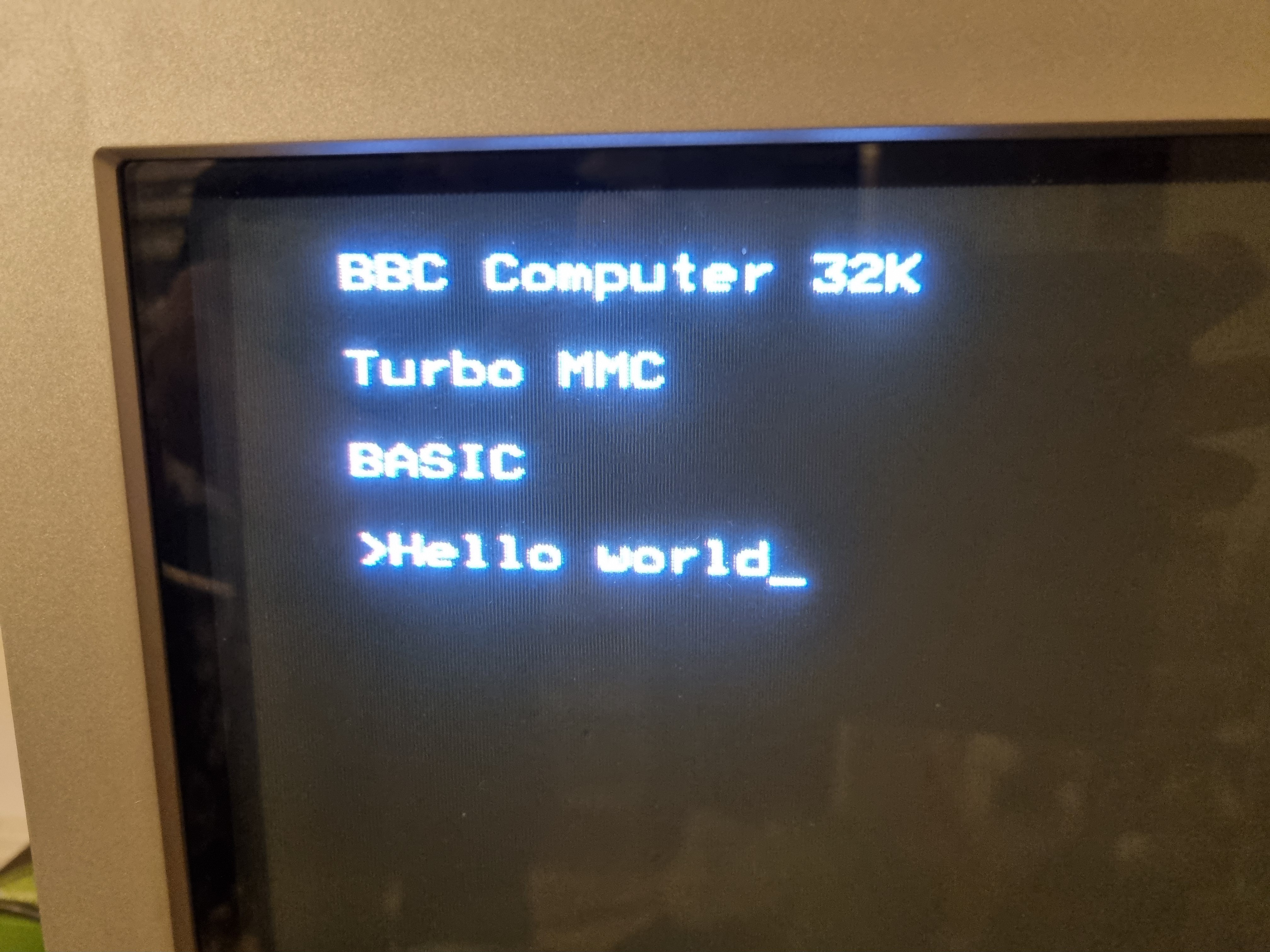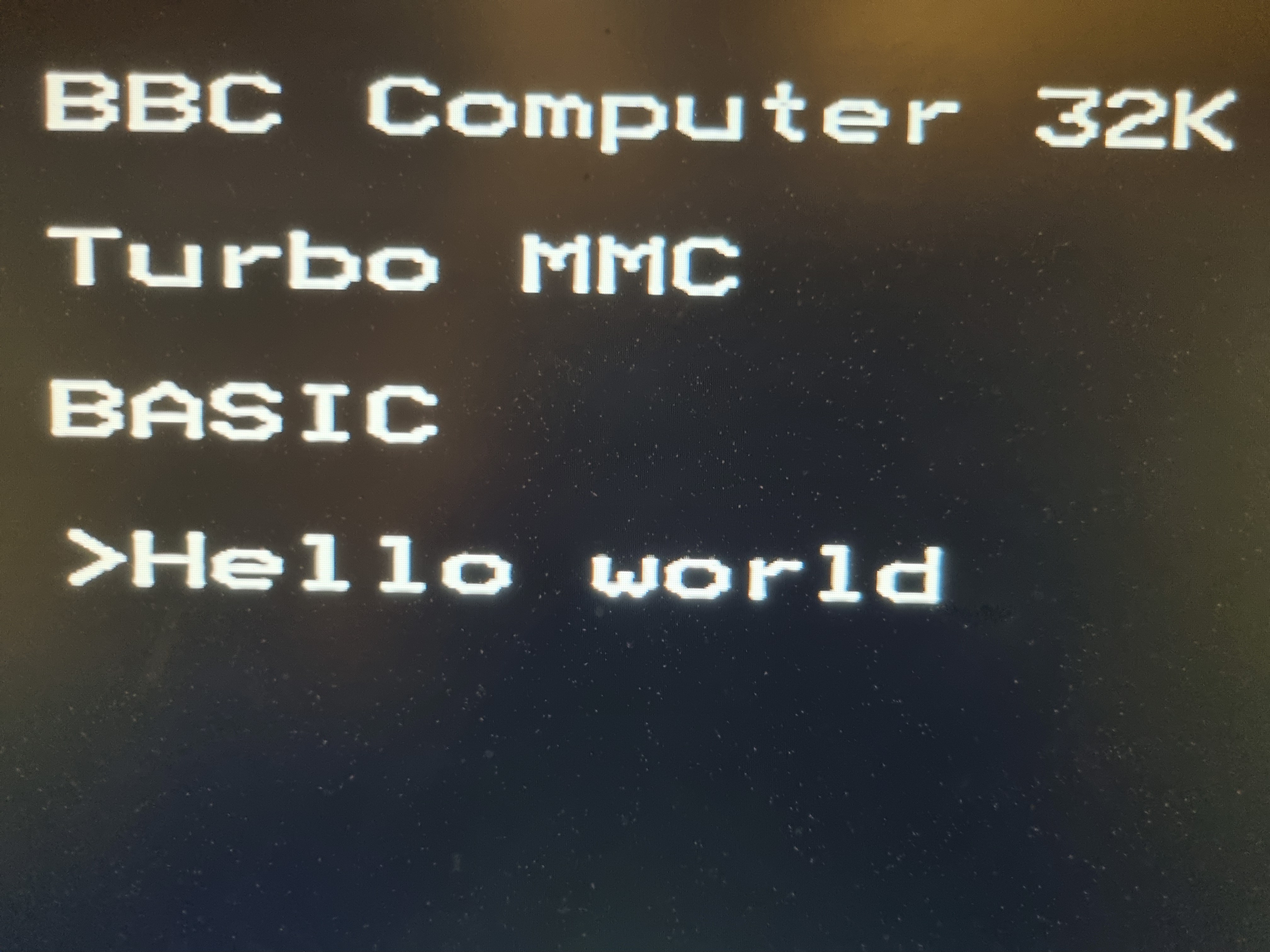It works with a composite video cable to my 15" CRT colour television.
2024-05-xx Ordered a SCART-to-HDMI upscaler.
2024-05-21 Ordered a BBC-to-SCART cable.
2024-05-27
Testing: works with SCART input of CRT television. Nostalgic glow around the characters.

Testing: works with SCART input of HDMI upscaler. No glow surrounding characters. The pixels are not perfectly square but that's not causing a problem. Overall quality better than the CRT TV because you have no glare and can't see the RGB sub-pixels (unless you are unfeasibly close). More noticeable is the dust on the screen.

The BBC micro display area in square(ish) pixels is up to 40 x 8 = 320 dots wide and 32 x 8 = 256 pixels high. The typical HDTV of 2024 is 1920 pixels wide (6 times wider in pixel count) and 1080 pixels high (4.21875 times higher). Multiplying the beeb's displayed pixels by four would give a 1280 x 1024 image with 28 pixel margins top and bottom, 320 pixels left and right. To get such pixel-perfect magnifications, one would be looking at an FPGA implementation, and then one might as well just use an emulator.
The HDMI upscaler does not display composite baseband video from a phono-to-SCART adaptor. This is because the SCART socket expects a control voltage on pin 16. Below 0.4 volts, it selects composite. Between 1 and 3 volts, it selects RGB.
To do: See if changing the voltage on pin 16 gets the upscaler working in each mode.
 Keith
Keith
Discussions
Become a Hackaday.io Member
Create an account to leave a comment. Already have an account? Log In.